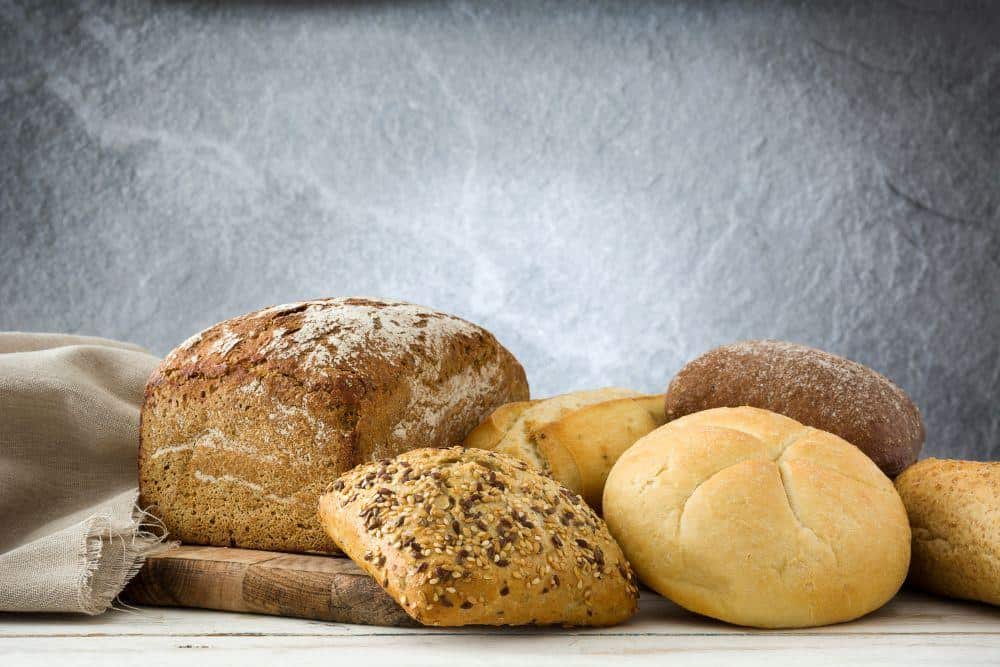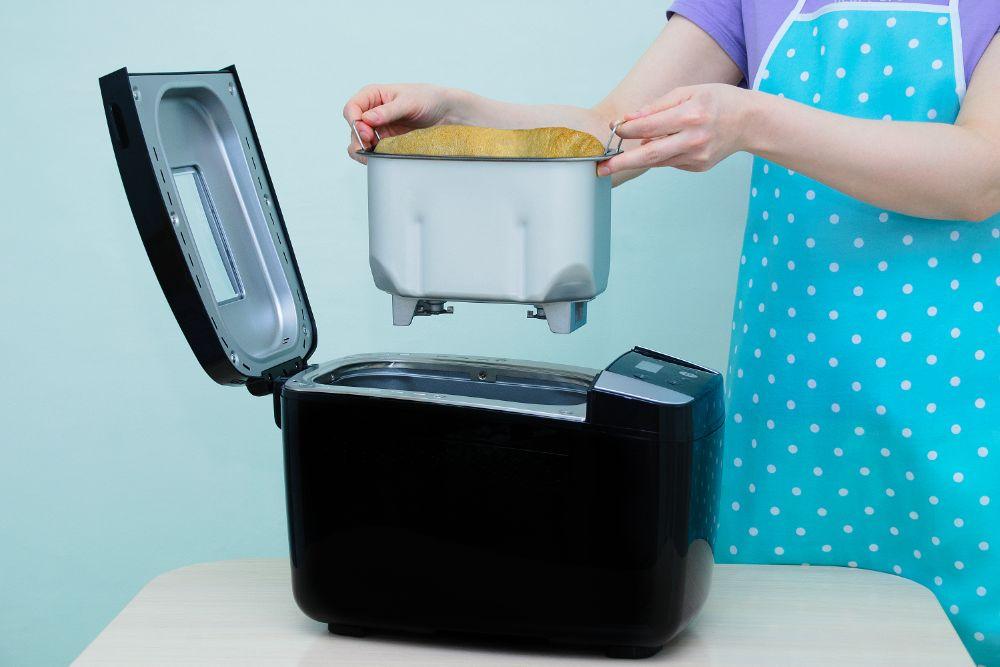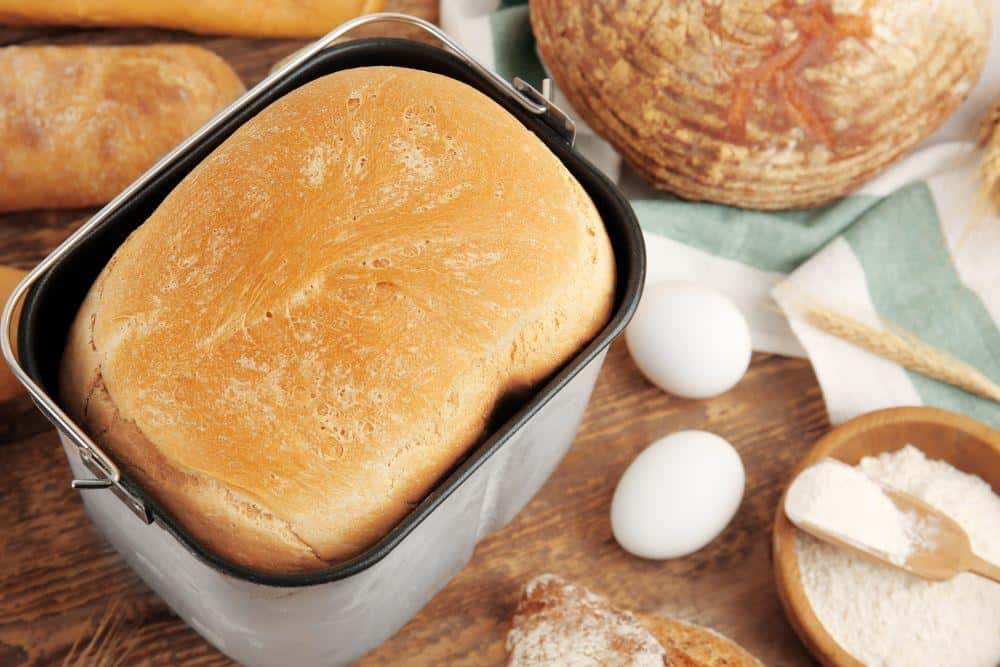The bread machine dough cycle simplifies homemade dough preparation for your bread recipe. Automating the steps of manual kneading and proofing eliminates the need for them. To use the dough cycle, add ingredients, select the cycle, and let the machine do the work.
After completing the cycle, shape and bake the dough as desired for fresh and delicious bread.
When using a bread machine, various ingredients affect the dough cycle time. Your bread machine recipe will likely call for different ingredients that play different roles in the dough cycle process.
You need to consider the type of flour, the amount of gluten, and the use of yeast, salt, water, sugar, milk, and eggs. Including the right types and amounts of each ingredient can ensure that your freshly baked bread is delicious/
By understanding the role of these ingredients, you can precisely adjust the dough cycle for optimal results in your bread machine.
Before starting, ensure your bread machine is ready. Follow the manufacturer's recommended ingredient order and place the paddle in the baking pan.
Begin with wet ingredients, and then add dry ingredients on top. This keeps the yeast from activating too soon.
Now, select the dough setting on your bread machine. The typical dough cycle lasts 30 minutes to an hour. During this time, mixing, kneading, and a short rest period occur.
The precise duration might depend on the type of bread and machine settings.
Keep an eye on the dough’s consistency as it mixes. You might need to make slight adjustments, such as adding a small amount of water or flour. Proper dough texture is essential for perfect bread.
Once the dough cycle finishes, carefully remove the dough from the baking pan. Shape it according to your desired bread form.
Some adjustments may be necessary, such as dividing the dough for rolls or flattening it for a pizza.
Place the shaped dough on the appropriate pan or baking sheet. Allow the dough to rise until it reaches the desired size. During this time, preheat your oven according to the recipe instructions.
Finally, bake the shaped bread dough in the preheated oven. Monitor the baking progress, as oven times can vary. When finished, carefully remove your fresh, homemade bread and enjoy!
When making bread with a bread machine, the dough cycle is an important step. Different types of dough will have varying dough cycle times, depending on the recipe and ingredients.
For basic white bread, you can expect a dough cycle time of just under an hour - typically anywhere from 45-60 minutes. This versatile dough works well for sandwich loaves and toast.
Whole-wheat bread has a heartier texture due to its higher fiber content. Its dough cycle will generally be longer than that of white bread, as the whole grains require more time to absorb moisture and develop their gluten structure. 
Different Dough Types Have Different Dough Cycle Lengths
French bread, on the other hand, has a crispy crust and a chewy interior. The dough cycle for this type of bread may vary depending on the specific recipe you use, but keep in mind that it may need a longer kneading time to develop the right texture.
Dinner rolls and pizza crusts are two more examples of dough types that benefit from the bread machine's dough cycle. Rolls often require a shorter cycle as they tend to be lighter and airier. Pizza dough, conversely, needs a sturdy structure to hold toppings, so expect a moderate dough cycle.
When experimenting with different bread recipes and types of dough, it's vital to consult your bread machine's manual or recipe guidelines for accurate dough cycle times. By doing so, you'll ensure your homemade bread turns out perfect every time.
Remember that different machines might have slightly different cycle times so always double-check with your specific model. Enjoy the convenience of the dough cycle on your bread machine, and explore various bread recipes to create delicious homemade breads for your daily meals or special occasions. Keep experimenting, and happy baking!

Dough Cycle Times May Vary Based on the Type of Bread Machine
During the baking process, your bread machine will knead the dough, ferment it, and then bake it. The knead cycle typically lasts 15 to 30 minutes, while the dough cycle takes 45 minutes to an hour to mix and shape the dough.
Your dough will undergo two important processes: fermentation and proofing. Fermentation is when the yeast interacts with the dough, allowing it to rise while improving flavor and texture.
This step may last up to 8 hours for artisan breads, but it's typically shorter for bread machines. During fermentation, temperature plays a crucial role, as it can affect how the dough rises and develops its flavor.
A common dough recipe allows bulk fermentation to occur at room temperature for 3 to 5 hours.
Understanding the role of temperature in fermentation.
Proofing is the final stage before baking, where your dough will further rise. This stage can last 1 hour to 1 day, depending on the recipe and conditions.
Your bread machine will have a designated rise cycle to facilitate this process. Additionally, it will help you set an optimal baking temperature to achieve perfect results.

Ensure Your Bread Dough Has the Proper Moisture Content According to Your Recipe
To ensure a successful bake, it's crucial to preheat your oven according to the selected baking cycle. With the right timer settings, you can be confident that your bread machine will do all the work for you, allowing you to enjoy fresh, warm bread without the hassle.
When using a bread machine, there are several tips to ensure your dough has the best possible outcome. You need to focus on the dough cycle, which can range from 30 to 90 minutes depending on your machine and bread type.
First, pay attention to the yeast you use. Choose either active dry yeast or instant yeast for better results. Avoid using old or expired yeast, as it can impact the rising of your dough.
Next, make sure your dough has the right moisture level. You want to prevent the dough from being too wet or too dry.
Check the dough's texture 10–15 minutes into the mixing cycle. If your finger comes back coated or the dough feels like a ball, adjust accordingly.
If you're preparing gluten-free bread, consider using a shorter dough cycle. The gluten free dough requires less proofing and a shorter rise time compared to regular dough, as it lacks the gluten structure.
Monitoring the rest cycle is also helpful for perfect dough. Giving the dough time to rest helps with proper gluten development and yeast activity.
Ensure your bread machine has a rest cycle and use it for better dough consistency.
Ensuring your dough has adequate rising time is crucial for success. If the dough doesn't rise enough, it remains dense and lacks proper texture.
Watch your bread machine's dough timer and ensure it rises before moving to the next cycle.
A standard dough cycle typically takes 40 to 60 minutes. This time can vary based on your bread machine and the specific recipe you use.
Most bread machines have dough settings that last between 15 and 45 minutes. The exact duration depends on the type of bread and your machine's capabilities.
For most recipes, bread machines need around 2 hours to complete the dough cycle. This time includes mixing, kneading, and resting the dough before shaping and baking.
